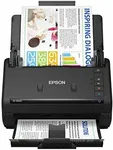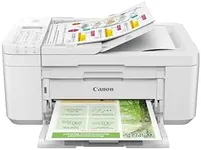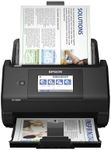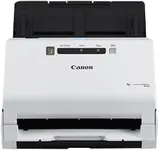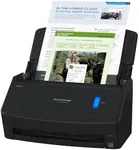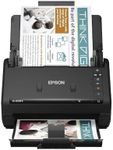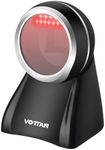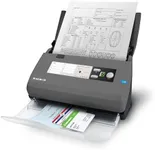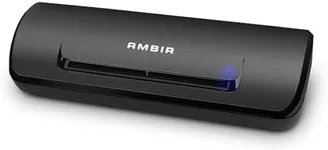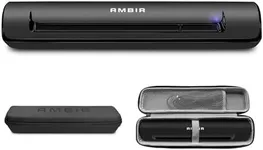Buying Guide for the Best Auto Feed Scanner
Choosing the right auto-feed scanner can significantly improve your productivity, especially if you need to scan large volumes of documents regularly. An auto-feed scanner allows you to load multiple pages at once, which the machine then scans automatically, saving you time and effort. To find the best fit for your needs, consider the following key specifications and how they align with your specific requirements.Scanning SpeedScanning speed is measured in pages per minute (PPM) and indicates how quickly the scanner can process documents. This is important if you have a high volume of documents to scan regularly. Scanners with speeds of 20-30 PPM are suitable for moderate use, while speeds of 40-60 PPM or higher are ideal for heavy-duty scanning. Consider your typical workload to determine the appropriate speed for your needs.
ResolutionResolution is measured in dots per inch (DPI) and determines the clarity and detail of the scanned images. Higher DPI values produce clearer and more detailed scans, which is important for documents with small text or intricate graphics. For general document scanning, 300 DPI is usually sufficient. For high-quality image scanning, consider a scanner with 600 DPI or higher. Choose a resolution based on the type of documents you will be scanning most frequently.
Document Handling CapacityThis refers to the number of pages the auto-feed tray can hold at one time. A larger capacity means you can scan more pages in one go without needing to reload the tray. For occasional use, a capacity of 20-50 pages may be adequate. For frequent or high-volume scanning, look for a scanner with a capacity of 100 pages or more. Assess your typical scanning volume to decide on the right capacity.
Duplex ScanningDuplex scanning allows the scanner to scan both sides of a document simultaneously. This feature is crucial if you often deal with double-sided documents, as it can significantly speed up the scanning process. If you primarily scan single-sided documents, this feature may not be as important. Consider your document types to determine if duplex scanning is necessary for you.
Connectivity OptionsConnectivity options include USB, Wi-Fi, and Ethernet, which determine how the scanner connects to your computer or network. USB is common for direct connections to a single computer, while Wi-Fi and Ethernet are useful for sharing the scanner across multiple devices or users. If you need flexibility and convenience, look for a scanner with multiple connectivity options. Think about your setup and how you plan to use the scanner to choose the right connectivity features.
Software and CompatibilityThe software that comes with the scanner can greatly affect its usability and functionality. Look for scanners that include robust software for managing, editing, and organizing scanned documents. Additionally, ensure the scanner is compatible with your operating system and any other software you plan to use. Consider your workflow and the software tools you rely on to find a scanner that integrates seamlessly into your setup.
Size and PortabilityThe physical size and portability of the scanner can be important if you have limited space or need to move the scanner frequently. Compact and lightweight models are easier to store and transport, but may have fewer features or lower capacities. Larger models typically offer more advanced features and higher capacities but require more space. Evaluate your workspace and mobility needs to choose the right size and portability for your scanner.
